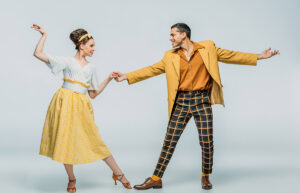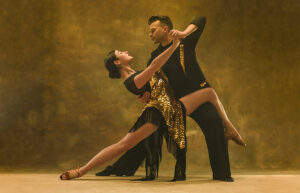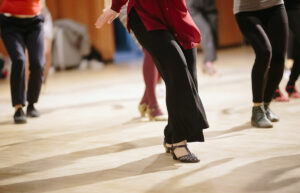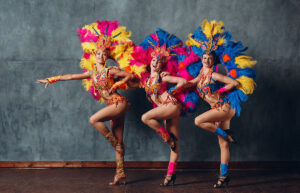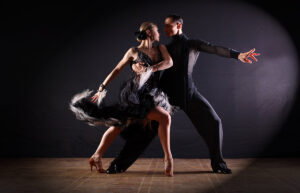What Is a Stand-in Actor? Types, Job Role, Skills & Steps

Curious about the behind-the-scenes magic of film and television production? Dive into the world of stand-in actors and unravel their crucial role on set. You may wonder what is a stand-in actor. This guide delves deep into the definition, types, job responsibilities, essential skills, and pathways to entering this fascinating realm of the entertainment industry. Whether you’re an aspiring actor seeking insights or simply intrigued by the mechanics of filmmaking, this guide provides a comprehensive overview of the dynamic role of stand-in actors.
Welcome to TheDemoStop, now join the community!
Connect with artists, fans and producers around the world.
What is a stand-in actor?
A stand-in actor is a person who temporarily replaced the lead actor on a film or television set during the setup of a scene or the preparation of lighting and camera angles. Stand-ins help the production crew set up the technical aspects of a shot without requiring the lead actor to be present until everything is ready.
When learning about what is a stand-in actor, remember that they are not the same as stunt doubles or body doubles, who perform dangerous or specific actions for the main actors.
Types of stand-ins
Single camera stand-in
For a single camera, the stand-in actors are often of the same height, weight, hair color, and skin tone as the main character. The primary purpose is to set up lights and cameras for shows that are generally one-hour or half-hour long.
Multi-camera stand-in
Multi-camera stand-in actors are hired for their acting skills rather than their resemblance with the leading actor. They usually act out an entire episode or scene instead of the actor so the production team can work out the blocking and dialogue before shooting.
Utility stand-in
Utility stand-in actors are helpful in testing lighting and shot design. As a utility stand-in actor, you do not need to look similar to the principal actor, but your height match is essential. Your height should match the actor(s) you’re filling in for, but shoes and step stools can help you get close.
What is a stand-in actor’s job?
Lighting arrangement assistance
Stand-ins help the cinematographer and lighting crew by substituting for the principal actors during the setup of lighting arrangements. They help the crew determine the best lighting angles, intensity, and overall ambiance for the scene. Since this is a time-consuming process, stand-in actors come to the rescue so that the real actors can save their energy for the actual act.
Camera setup support
Stand-in actors assist with camera setup by replacing the lead actors while the camera department positions and adjusts the camera and other equipment. This process ensures that the shot’s framing, focus, and overall composition are optimized before the main actors step in.
Rehearsal participation contribution
Stand-in actors often participate in rehearsals alongside the principal actors. Thus, they help the director and the crew understand the potential blocking and movements within the scene. Based on the stand-in’s movements, the director and crew can also fine-tune the camera angles and other technical details.
Welcome to TheDemoStop, now join the community!
Connect with artists, fans and producers around the world.
What skills do stand-ins need?
Professionalism
Stand-in actors need to conduct themselves professionally on set. This behavior includes respecting the production team, principal actors, and fellow crew members. They should be reliable, follow instructions, and maintain a positive attitude. One example is getting a little excited by seeing famous actors, but as stand-ins, you have to keep calm and not intimidate the principal actors.
Focus
The ability to stay focused and attentive is crucial for stand-ins. They often work in environments with numerous distractions, and maintaining concentration is essential, especially during rehearsals and technical setups. Any detail missed during the rehearsal can create a wrong impression for the stand-in actors.
Timeliness
Punctuality is vital in the film industry, and stand-ins are no exception. They must be ready to start working at the scheduled time to ensure the smooth progression of the filming process.
Knowledge
While extensive technical knowledge is optional for a stand-in actor, a basic understanding of the filmmaking process benefits stand-ins. Such information includes knowing the purpose of lighting setups, camera angles, and other technical aspects they are involved in. Some of the terms a stand-in should know are listed below:
- Banana: a sign to turn around and move in a circle instead of a straight line
- Blocking: It means planning how actors will move in a scene.
- A call sheet: It is a sheet that has all the important details about each shooting day, like the character number, shooting plan, and location.
- Camera left: Point of view of the camera, which is your right if you’re facing the camera.
- Camera right: If you’re facing the camera, the camera is on your left.
- Closed rehearsal: A rehearsal is a meeting where only the actors and directors work on blocking for a scene.
- Color cover: The stand-ins wear clothes that look like what the actor will wear in a scene.
- Downstage: The front of the set faces the camera or the crowd.
- First team: The main actors in a scene.
- Half-speed: When moving through a scene, you should perform actions at half the usual speed you would normally do.
- Marking rehearsal: The whole rehearsal for everyone, even stand-ins
- Second team: The stand-ins for the main actors in a scene.
- Sides: They are the script for the scene or parts being filmed that day.
- Stage left: It is your left if you are facing the camera.
- Stage right: It is to the right if you’re facing the camera
- Upstage: Back of the stage, away from the camera and the crowd.
- Wrap: This word means the day of filming is over.
How to become a stand-in actor?
Gain experience
Start by gaining experience in the entertainment industry. You could involve yourself in local theater productions, student films, or independent projects. Any on-set experience will provide valuable insights into the filmmaking process and help you understand the dynamics of working on a production.
Networking
The entertainment industry runs on networking. Building relationships with casting directors, producers, and other actors can lead to opportunities for stand-in roles. Attend industry events and film parties to meet new people in the film and television industry. Join online platforms and communities related to acting and film to expand your network.
Showcase physical characteristics
Stand-ins are selected based on their physical resemblance to the lead actors. Ensure that your appearance, height, and body stature align with the actors you may be standing in for. While exact matches are not always necessary, a close resemblance is essential for continuity in the production.
How to get hired as a stand-in?
Be where the jobs are
The location plays an important role when it comes to getting job opportunities in this industry. Being physically present in places where filming occurs, such as New York City or Los Angeles, increases your chances of meeting industry professionals and discovering potential stand-in opportunities.
Sign up for casting services.
Create profiles on casting platforms such as Backstage, Casting Networks, or other local services. These platforms often list stand-in roles, and casting directors use them to find suitable candidates.
Get in contact
Proactively reach out to casting directors, production companies, or film offices and share your headshots and video resume. Introduce yourself, express your interest in stand-in work, and provide any relevant qualifications or experience you may have. Polite and professional communication can leave a positive impression.
Join SAG-AFTRA
Becoming a Screen Actors Guild‐American Federation of Television and Radio Artists (SAG-AFTRA) member can open doors to exclusive casting calls and industry networking opportunities. It adds credibility to your profile as a professional stand-in.
Work on set
Take up other roles on the set as a part of the production crew. This role could be as an extra, production assistant, or another supporting role. In this way, your chance of getting noticed increases, and you might be able to build connections on set and showcase your work ethic, which can lead to referrals for stand-in positions.
Welcome to TheDemoStop, now join the community!
Connect with artists, fans and producers around the world.
Conclusion
What is a stand-in actor?
A stand-in actor is a person who takes the place of a main actor to assist the production department during film or television production.
Types of stand-ins
- Single camera stand-in
- Multi-camera stand-in
- Utility stand-in
What is a stand-in actor’s job?
- Lighting arrangement assistance
- Camera setup support
- Rehearsal participation contribution
What skills do stand-ins need?
- Professionalism
- Focus
- Timeliness
- Knowledge
How to become a stand-in actor?
- Gain experience
- Networking
- Physical characteristics
How to get hired as a stand-in?
- Be where the jobs are
- Sign up for casting services
- Get in contact
- Join SAG-AFTRA
- Work on set
FAQs
What is a stand-in actor?
Stand-in actors help the crew with lighting, framing, and rehearsing before the actual shooting begins. They are often chosen based on their physical resemblance to the main actors, such as height, weight, hair color, and skin tone.
What do you call an actor's stand-in?
The stand-in actors are often addressed as ‘second team.’ This term is a technical term used on film or television sets. So, if you want to become a stand-in actor, you should know such terms.
What is the role of a stand-in actor?
The role of stand-in actor includes:
- Lighting arrangement assistance
- Camera setup support
- Rehearsal participation contribution
What skills do you need to become a stand-in actor?
- Professionalism
- Focus
- Timeliness
- Knowledge















